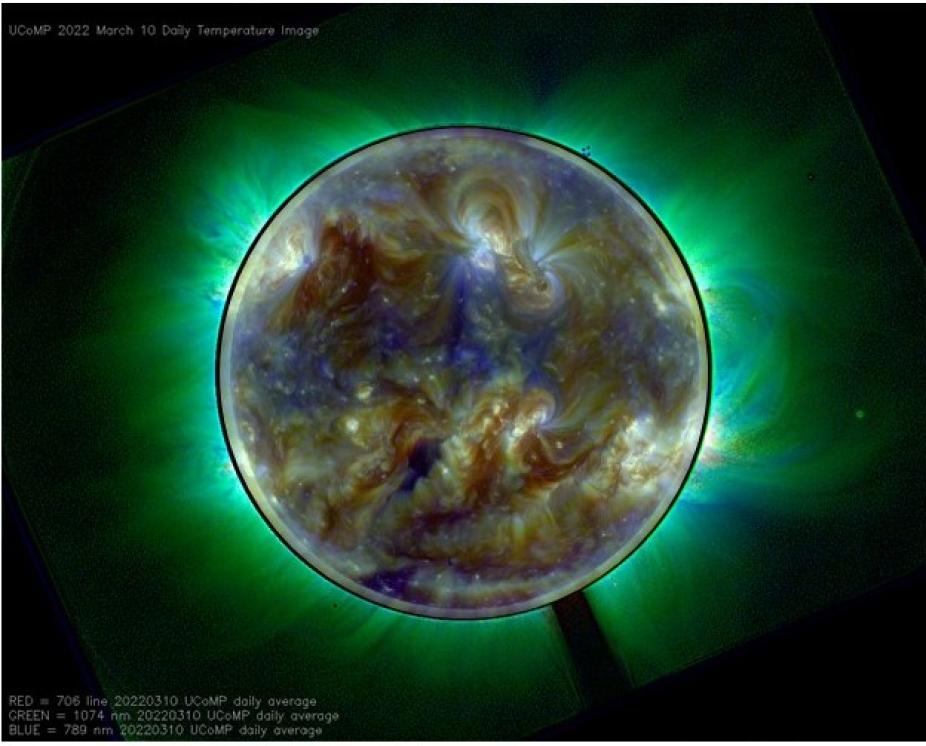
Example of UCOMP daily temperature map obtained with the superposition of daily average images of Fe XV 706 nm (red), Fe XIII 1074 nm (green) and 789 nm (blue) of the solar corona; on the disk, an SDO/AIA multi-channel image has been inserted.
Frontiers in Astronomy and Space Sciences: Enrico Landi, Sarah E. Gibson, Steven Tomczyk, Joan Burkepile, Giuliana de Toma, Jie Zhang, Tom Schad, Therese A. Kucera, Katharine K. Reeves, Hebe Cremades in Frontiers in Astronomy and Space Science emphasize THE NEED: Understanding and predicting the major phenomena taking place in the solar corona, such as flares and Coronal Mass Ejections (CMEs), the heating and evolution of the solar atmosphere, and the acceleration of the solar wind, are fundamental challenges to predict our own star. These challenges are related to the solar magnetism and to the physical properties of solar plasmas: meeting them requires two types of measurements: (A) Spectrally resolved, simultaneous observations of the entire corona in multiple spectral lines emitted by chromospheric to hot coronal plasmas at high spatial resolution and cadence for long periods of time; and (B) Coronal magnetic field measurements. THE PROBLEM: The current fleet of space instruments suffers from three main limitations: (A) EUV narrow-band imagers provide simultaneous 2D images of the corona, but lack adequate plasma diagnostic capabilities; (B) High-resolution EUV spectrometers have the required diagnostic potential, but their narrow field of view prevents a continuous and simultaneous coverage of the entire corona. (C) No current instrument can measure the global coronal magnetic field. THE SOLUTION: Visible to near-IR coronagraphs coupled to tunable filters combine the strengths of both EUV high resolution spectrometers and EUV imagers in one single instrument by (1) providing 2D images of the whole field of view at a single wavelength; (2) spectrally resolving individual lines near-simultaneously across the entire field of view, and (3) measuring the magnetic field through polarimetry. The proposed Coronal Solar Magnetism Observatory (COSMO) visible to near-IR coronagraph would allow the measurement of: (A) simultaneous plasma thermal structure of the whole solar corona and CMEs; (B) plasma velocity vector; and (C) coronal magnetic field. The technology behind visible/near-IR coronagraphs coupled to tunable filters is mature; ground-based implementation of such instruments would provide long-term, easily-upgradable data sets.